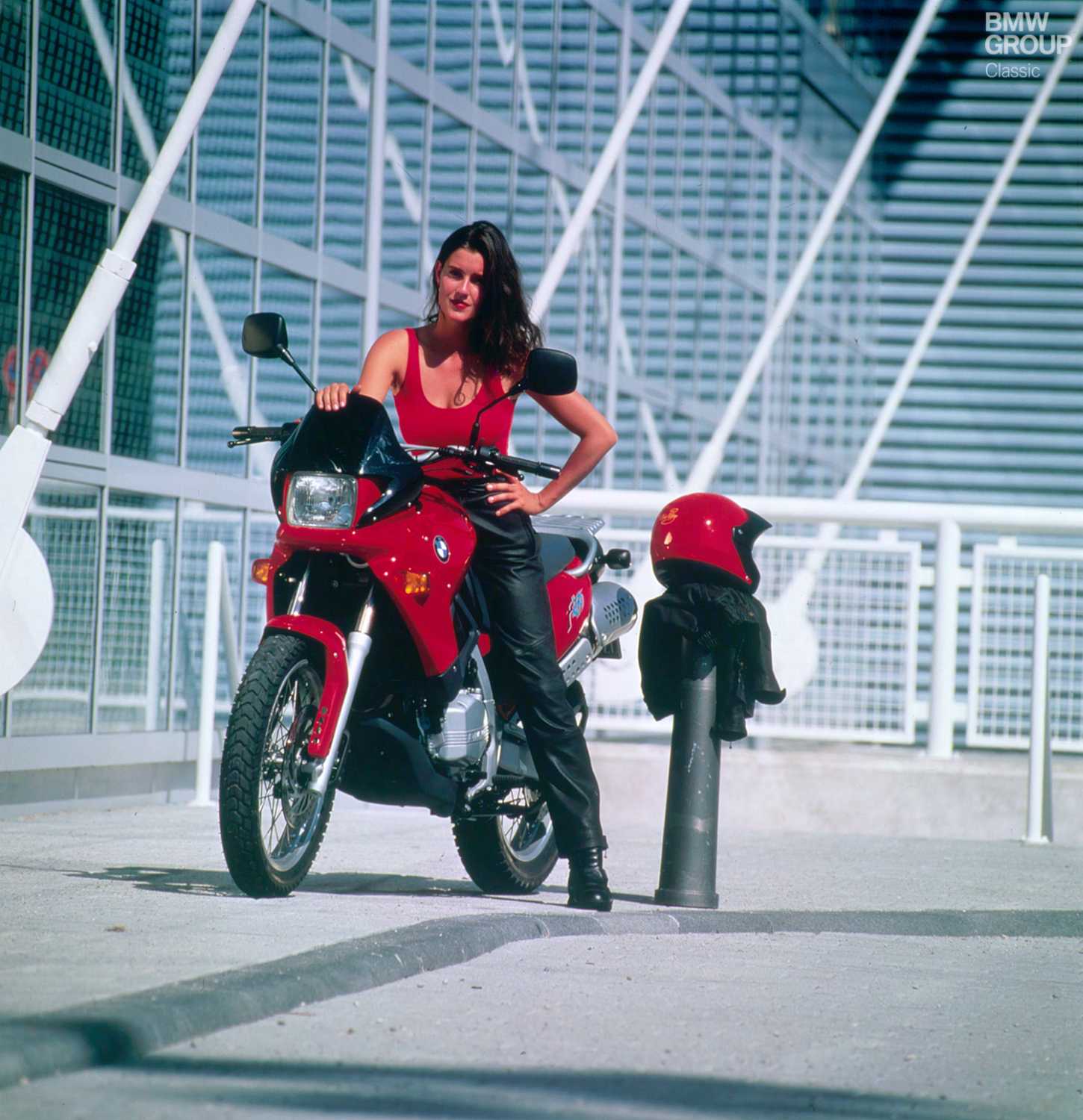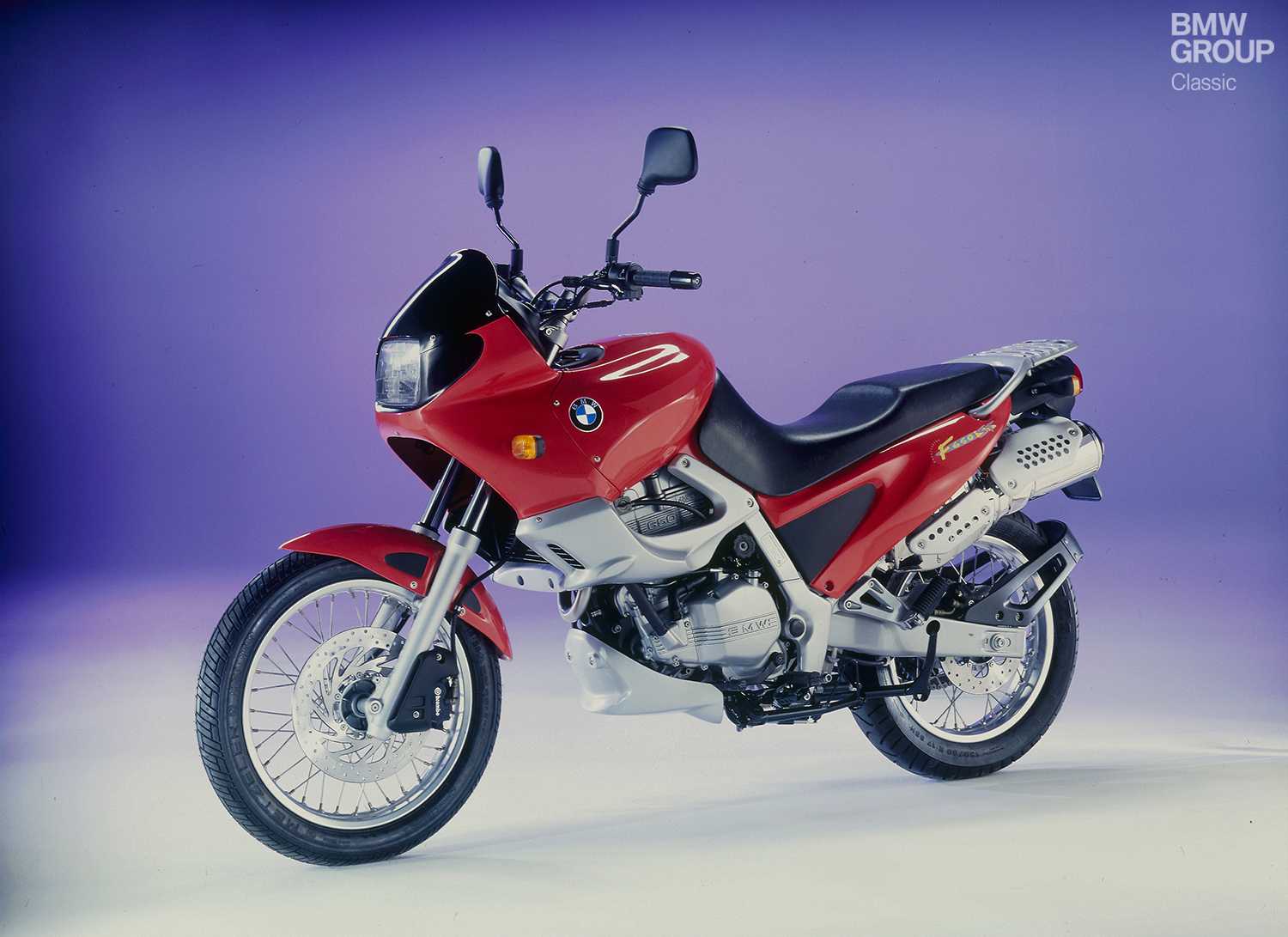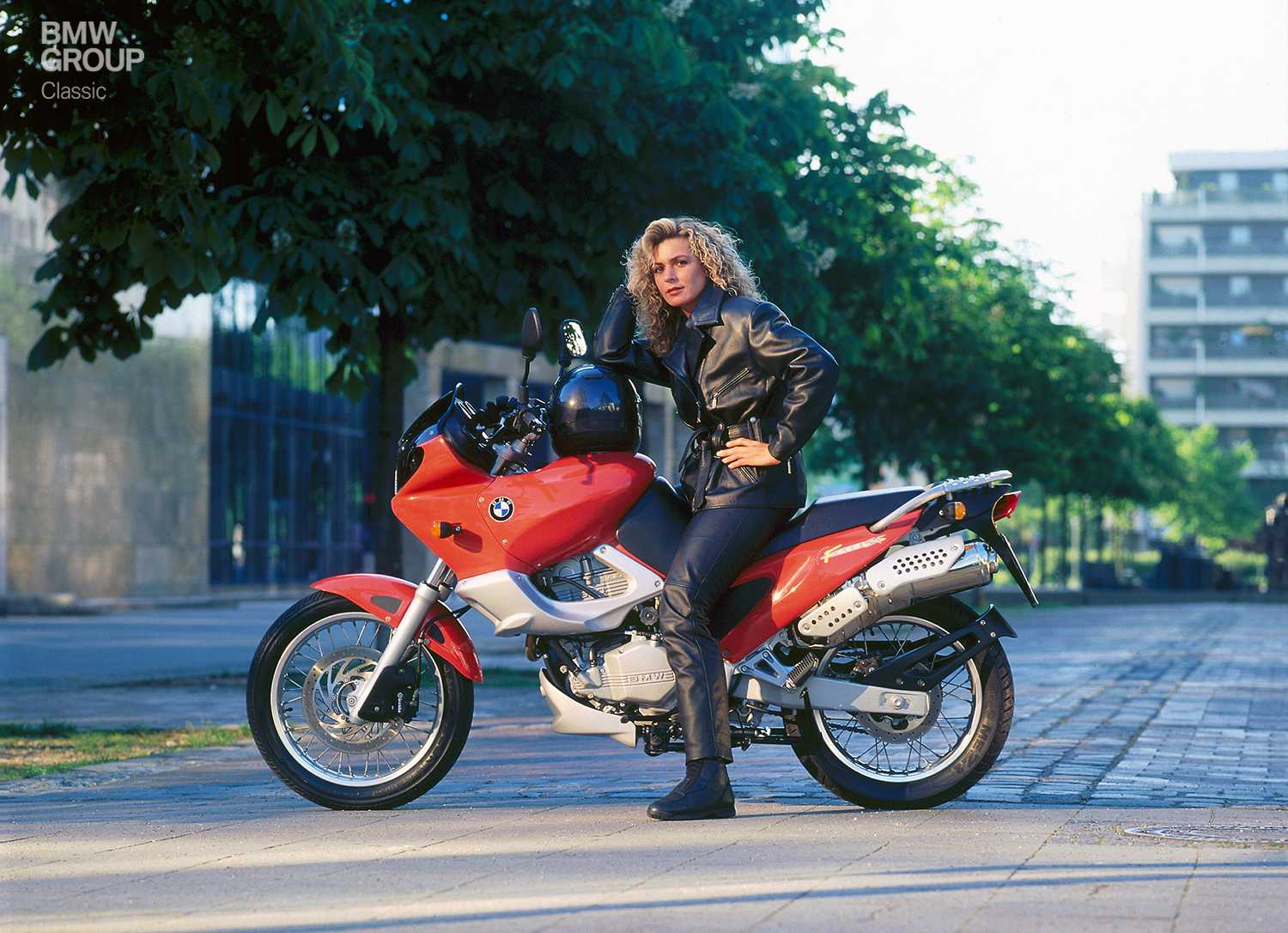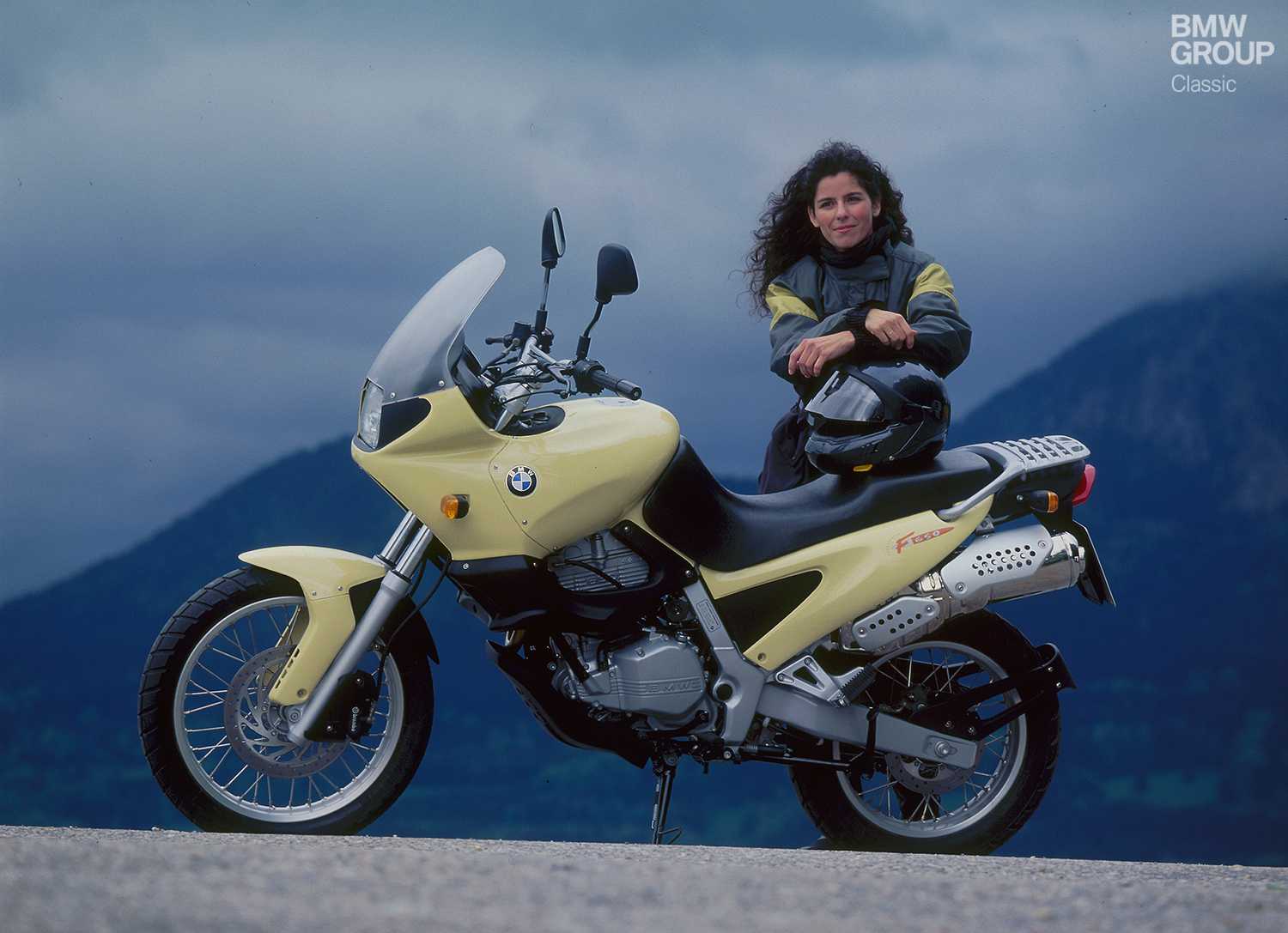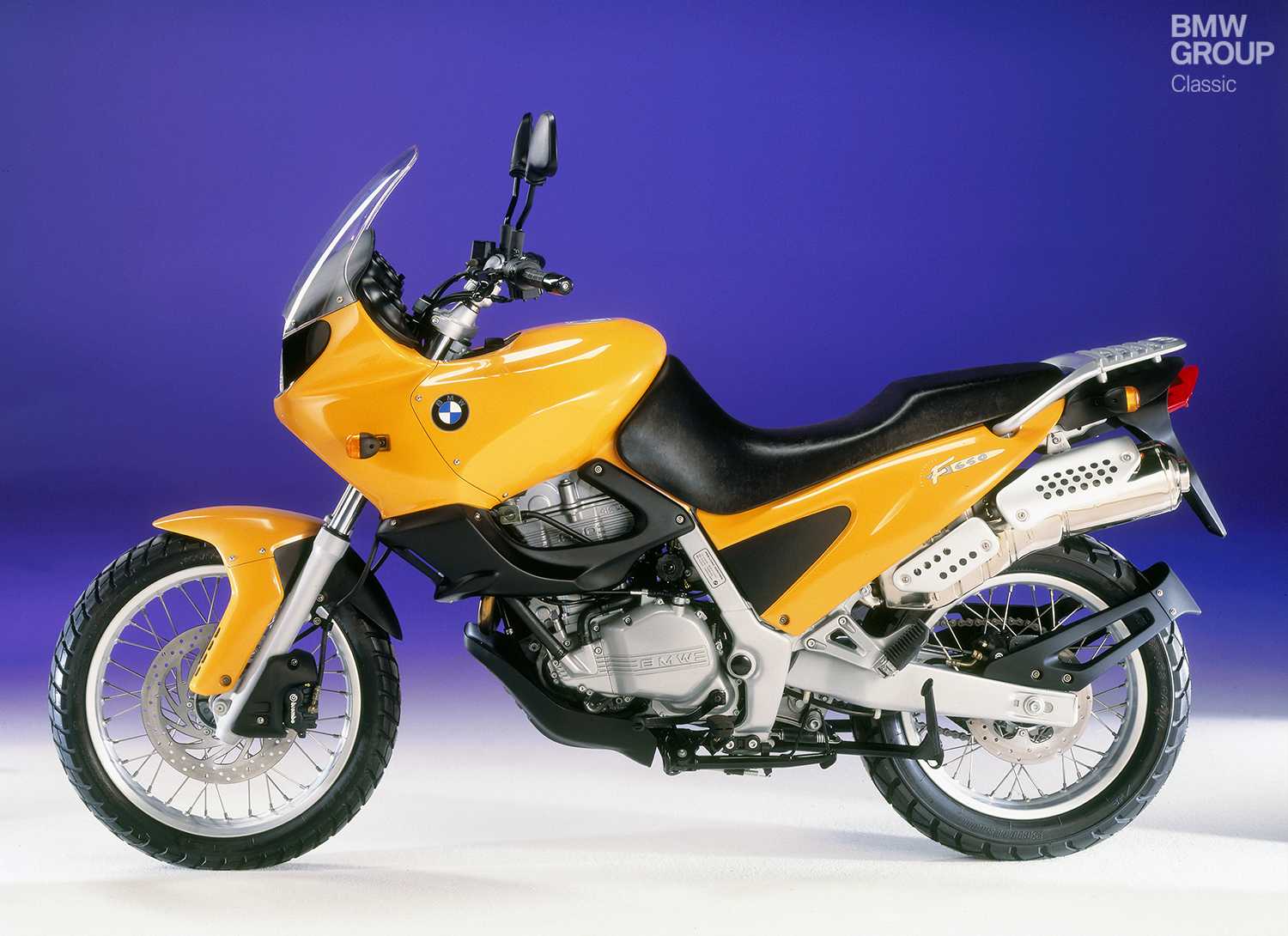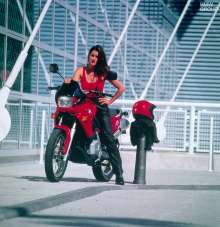After a 27-year hiatus, BMW returned to the single-cylinder market in 1993 with its F 650. Now that city streets had been taken over by nimble enduro bikes, “funduros” such as the new BMW sought to offer something a little different. Slender and sporty in appearance, easy to ride and with a casual, straightforward manner, the F 650 was just the ticket for all sorts of riders – recent converts to motorcycling and returnees included. The F series tapped into the spirit of the times and became a major hit.
City centres have long wrestled with a particular problem when it comes to traffic: space is at a premium and there are simply too many road users trying to share it. However, a svelte motorcycle will make light work of the situation and there’s never any trouble finding a parking space. During the 1980s, enduro models became an increasingly common sight in cities, despite not actually being designed for them. Their manoeuvrability and cool looks gave them irresistible appeal, a trend comparable to the rise of the SUV in more recent times. This gave the BMW development team the idea for a “funduro”, i.e. an enduro bike that was also a hoot to ride on the road. It would be smaller, more compact and cheaper than the highly successful G/S, which was already an established presence on the market. And thus the F 650 was born, the comeback of the single-cylinder engine at BMW complete.
Nothing new, yet all very different.
For a long time, single-cylinder motorcycles such as BMW’s most recent example of the breed – the BMW R 27 – offered customers sufficient engine power without over-stretching their finances. They were the definitive sensible option, but true enthusiasts longed for more. As a result, BMW ceased production of single-cylinder models in 1966, after which it only made boxers with two cylinders. The market had changed radically: people now rode motorcycles for the sheer love of it, and if you didn’t love it, you drove a car. The motorcycle was no longer a low-cost means of transport born out of economic necessity.
Designed by BMW, built in Austria and Italy.
The technical design and configuration of the new engine were the work of BMW engineers, but it was built at Bombardier-Rotax in Austria. The F 650 was assembled at Aprilia in Italy, which already offered a similar model in the shape of the Pegaso 650. It was also the first to feature a chain drive, a development eyed warily by resolute traditionalists but which proved to be a success, not least for cost reasons. The engine generated 48 horsepower from 643cc and gave the bike – which had a dry weight of just 189 kilograms – a top speed of 163 km/h (101 mph).
The go-anywhere motorcycle.
The F 650 had all the ingredients to be the perfect all-rounder, and that made it special. It could go off-road when fitted with the right tyres, but it was on asphalt that it truly dressed to impress. The new bike was just as much at home darting along winding country lanes and narrow back roads as it was weaving in and out of hectic city traffic. The F 650 ST that joined the line-up in 1996 had even stronger on-road credentials. Both versions came with a proper pillion seat and offered a good standard of comfort on long journeys, too. The bike was perfect for both beginners and returning motorcyclists. It wasn’t exactly a bargain; indeed, it was initially priced at DM 5,397. But that still made it the cheapest BMW in the range.
A gift for timing.
The F 650 was perfectly in tune with the spirit of the times and became a resounding success, extending the popularity of the G/S model into a smaller class. By 1999, 64,000 units had rolled off the production line at Aprilia – almost twice the 35,000 originally planned. The model then underwent a major overhaul and production shifted to the main BMW plant in Berlin. The F 650 has since become something of a modern classic, belying its still remarkably fresh feel. And so the “funduro” continues to live up to its name, even now.
